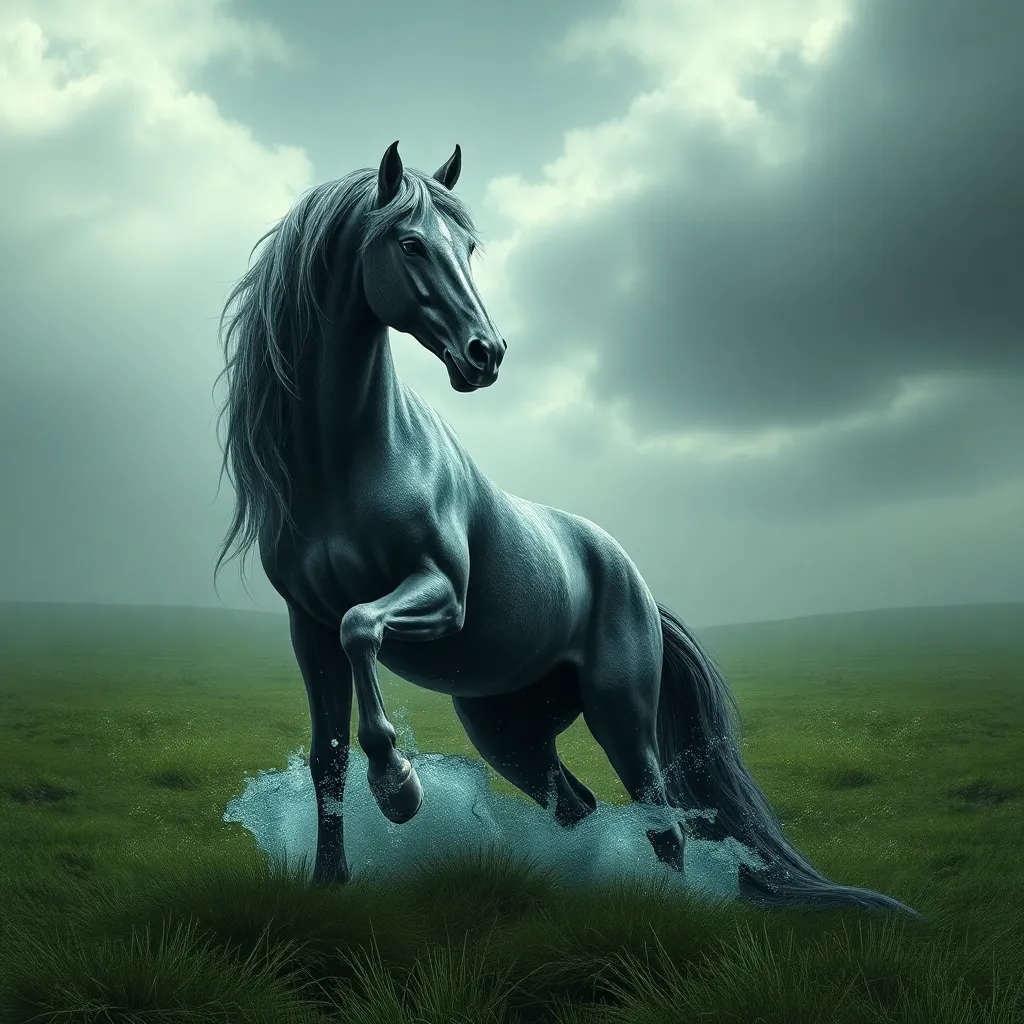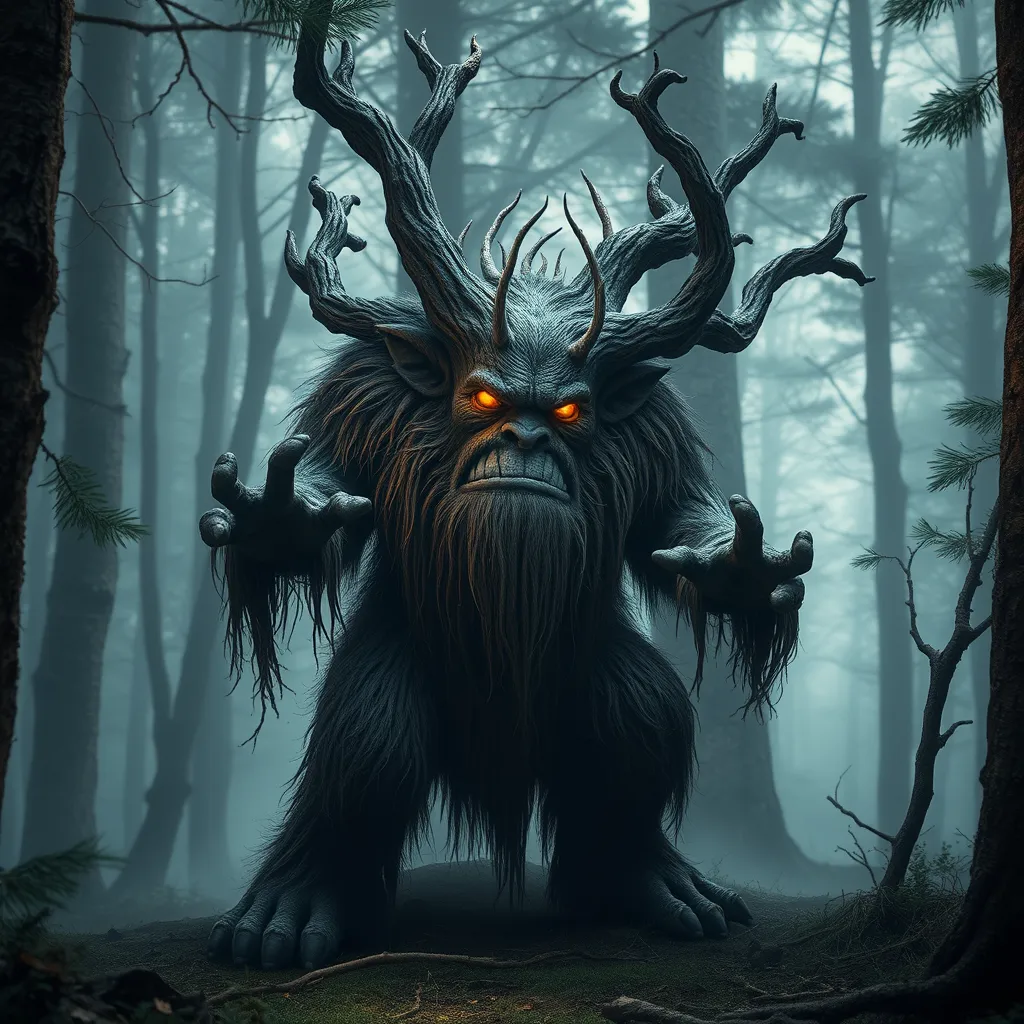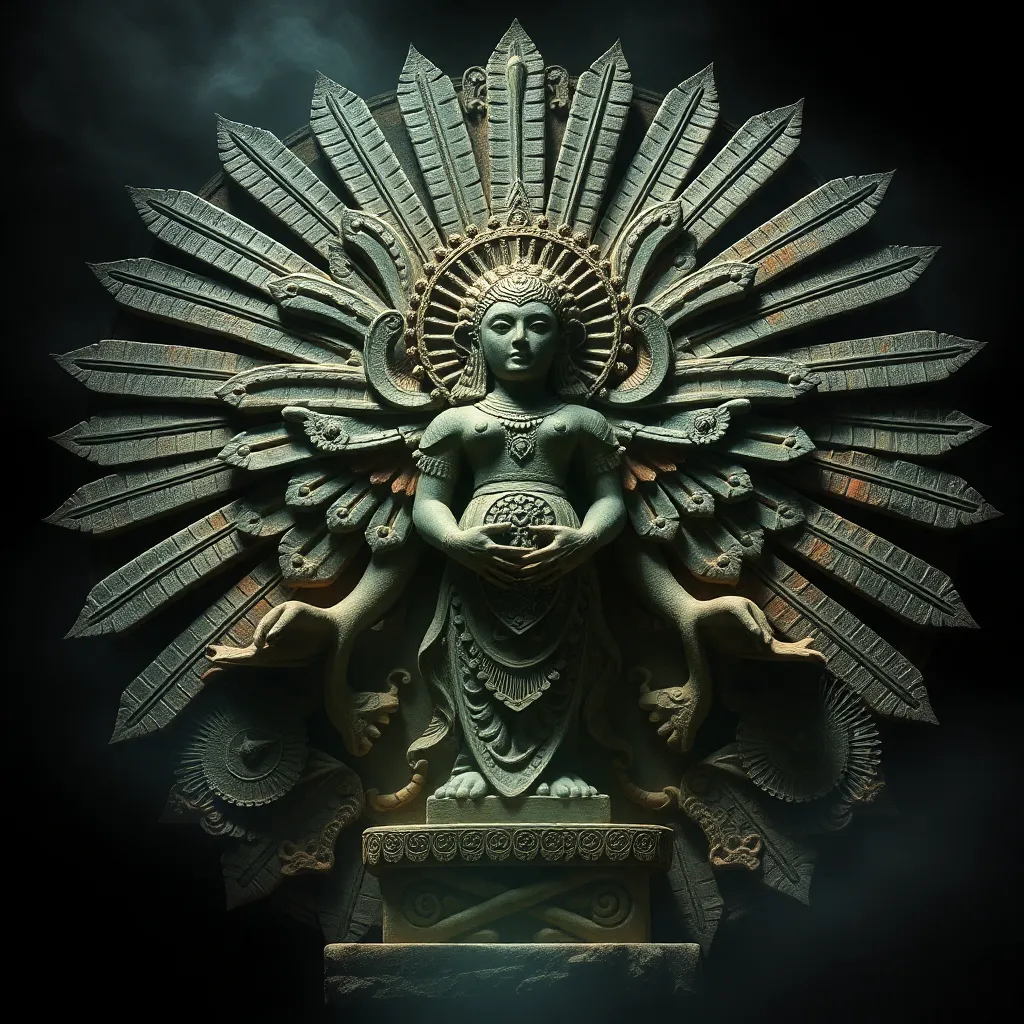The Kelpie’s Symbolism: Examining the Mythical Horse’s Meanings and Representations
I. Introduction to the Kelpie
The Kelpie is a fascinating figure in Scottish folklore, a mythical horse that is said to inhabit the rivers and lakes of Scotland. Its origins can be traced back to ancient Celtic mythology, where water spirits were often depicted as both beautiful and treacherous. The Kelpie has become a symbol of the mysterious and often dangerous nature of water, embodying the qualities of allure and deception.
In Scottish folklore, the Kelpie is primarily known as a shape-shifting creature that lures unsuspecting travelers to their doom. This article will explore the various symbols and representations associated with the Kelpie, shedding light on its significance in both historical and modern contexts.
II. The Kelpie’s Physical Characteristics
A. Description of the Kelpie’s appearance
The Kelpie is often depicted as a stunning black horse with a shimmering coat, reminiscent of the dark waters in which it resides. While it generally appears as a horse, it is known for its ability to change shape; sometimes it takes on a more human form, particularly that of a beautiful young woman.
B. Variations in representations across different cultures
Across various cultures, the interpretation of the Kelpie can differ. While Scottish lore predominantly presents it as a horse, other legends depict similar water spirits with diverse characteristics. For example:
- In Irish mythology, the Pooka is a shape-shifting creature that can take the form of a horse or other animals, often associated with mischief.
- In Norse myths, the Nix, a water spirit, is also known for its enchanting beauty and dangerous nature, drawing victims into the depths.
C. The significance of the Kelpie’s shape-shifting abilities
The ability to transform is central to the Kelpie’s identity. Shape-shifting represents the duality of nature—its capacity for both beauty and danger. This characteristic serves as a metaphor for the unpredictable aspects of life and the hidden perils beneath attractive surfaces.
III. The Kelpie as a Water Spirit
A. Connection to rivers and lakes in Scottish mythology
Kelpies are intrinsically linked to bodies of water, often said to dwell in rivers, lakes, and lochs. Their presence signifies the spiritual connection between the land and water, highlighting the importance of these elements in Scottish culture.
B. Symbolism of water in folklore and its meanings
Water in folklore often symbolizes:
- Life and fertility, as it is essential for growth.
- Death and danger, representing the unknown and the potential for disaster.
- Transformation, as it can shape landscapes and influence the course of life.
C. The Kelpie’s role as a guardian of waterways
As a guardian, the Kelpie embodies the protective qualities of water. However, this guardianship comes with a warning; it serves as a reminder of the respect that must be afforded to nature’s forces, as they can be both nurturing and destructive.
IV. Themes of Transformation and Deception
A. The Kelpie’s ability to disguise itself as a beautiful horse
The Kelpie’s allure lies in its ability to appear as a magnificent horse, enticing those who encounter it. This transformation plays into the larger theme of deception present in many folklore tales, where appearances can be misleading.
B. Analysis of transformation in folklore and its symbolic meanings
Transformation in folklore often symbolizes:
- The dual nature of beings—good and evil, beauty and horror.
- The journey of self-discovery, where characters must navigate their identities.
- The consequences of choices, particularly when one is seduced by appearances.
C. The implications of deception and trust in the Kelpie’s stories
The Kelpie’s tales often serve as cautionary fables about trust. They remind us that not everything that appears beautiful is safe, and that one should be wary of the seductive nature of the unknown.
V. The Kelpie and Human Interaction
A. Encounters between Kelpies and humans in folklore
Folklore is rich with stories of humans encountering Kelpies, often resulting in tragic outcomes. These encounters typically involve a traveler who is drawn to the Kelpie’s beauty, only to be dragged into the depths of the water.
B. Lessons learned from these interactions
These stories impart crucial lessons, such as:
- The importance of skepticism in the face of temptation.
- Respect for nature and its inherent dangers.
- The need for awareness of one’s surroundings and the potential for deception.
C. The Kelpie as a cautionary figure
As a cautionary figure, the Kelpie warns against naivety and the perils of blindly trusting appearances. Its role in folklore serves to educate and remind the audience of the complexities of both nature and human relationships.
VI. The Kelpie in Modern Culture
A. Representation of the Kelpie in literature and media
The Kelpie continues to capture the imagination of writers and artists. In literature, it often appears in fantasy novels, children’s books, and poetry, where its character is reinterpreted for contemporary audiences.
B. Influence on contemporary art and storytelling
Artists draw inspiration from the Kelpie, creating works that explore themes of nature, beauty, and danger. The creature has also influenced movies, video games, and music, contributing to the broader genre of mythical creatures in modern storytelling.
C. The resurgence of interest in mythical creatures
In recent years, there has been a notable resurgence in the fascination with mythical creatures, including the Kelpie. This interest reflects a collective yearning to reconnect with folklore and explore the deeper meanings behind these age-old stories.
VII. Symbolism of the Kelpie in Broader Context
A. Comparisons with other water spirits in mythology
The Kelpie shares similarities with various water spirits in global mythology, such as:
- Mermaids, who can symbolize the allure and danger of the sea.
- Yemaya, a Yoruba goddess associated with water and motherhood.
- The Naiads of Greek mythology, who embody the beauty and peril of freshwater.
B. The Kelpie as a symbol of nature’s duality (beauty vs. danger)
The Kelpie encapsulates the duality of nature—its capacity to provide beauty and sustenance while also possessing the ability to harm. This duality is a recurring theme in myths worldwide, illustrating the balance of life.
C. Cultural interpretations of the Kelpie’s symbolism
Different cultures interpret the Kelpie’s symbolism in various ways. In some contexts, it represents the untamed aspects of nature, while in others, it serves as a metaphor for the human experience, highlighting the intricate relationship between humanity and the natural world.
VIII. Conclusion
A. Summary of the Kelpie’s meanings and representations
The Kelpie is a multifaceted symbol within Scottish folklore, representing beauty, danger, and the complexities of nature. Its shape-shifting abilities and connection to water reflect deeper themes of transformation, deception, and caution.
B. The enduring legacy of the Kelpie in folklore and culture
The Kelpie’s legacy continues to thrive, as it remains a popular figure in literature, art, and modern storytelling. Its stories resonate across generations, reminding us of the lessons imparted by folklore.
C. Final thoughts on the significance of mythical creatures in understanding human experiences
Mythical creatures like the Kelpie serve as powerful symbols, reflecting our fears, desires, and the intricate relationship we have with the natural world. By studying these figures, we gain insight into the human experience and the timeless themes that connect us all.



